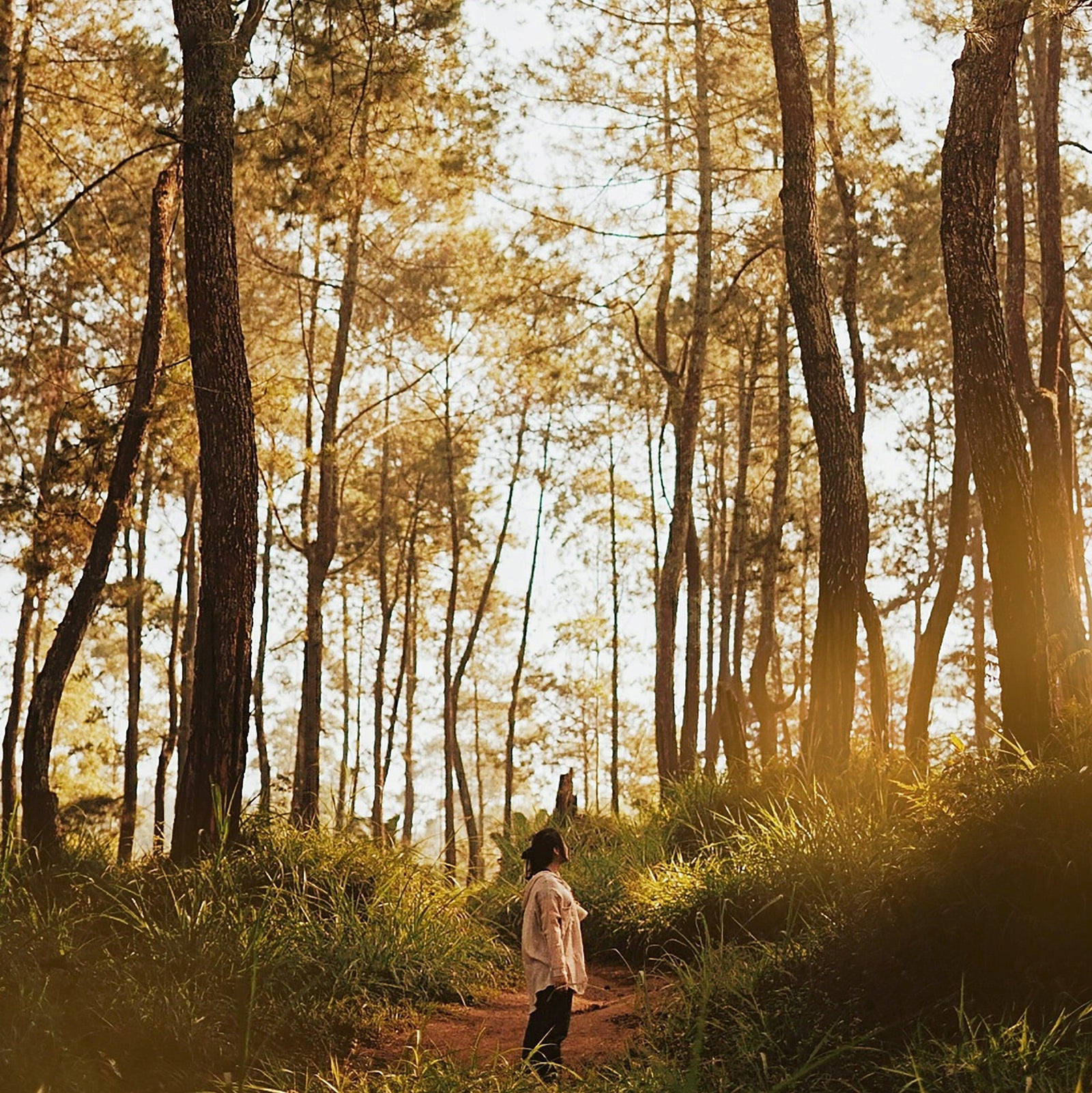Here at La Pochette, we love to eulogize the benefits of the great outdoors, not only for its effect on the body, but also the mind.
That said, we’re not always good at giving ourselves permission to ‘self-care’, or look after our mental, emotional and physical wellbeing. Now more than ever, it’s crucial we’re getting outside and looking after ourselves.
One way in which to do this, is forest bathing. If you’re not yet familiar with this concept, forest bathing or ‘shinrin-yoku’, is the Japanese practice of ‘bathing’ or immersing oneself in the calm of the forest. Simply soaking in the atmosphere and tranquillity of nature is believed to boost health, wellbeing, promote relaxation, at the same time enabling a person to re-engage with the natural world.
This may sound somewhat nebulous, but there are various studies espousing the positive effects of forest bathing. A 2019 study by The Forest Bathing Institute found significant improvements in mood, as well as a 57% improvement in heart rate variability, and a 29% reduction in anxiety. What’s more, forest bathing has been prescribed by the Japanese equivalent of the NHS for more than 40 years as a remedial intervention for issues such as depression, anxiety, and physical complaints such as high blood pressure. The National Trust is now promoting the practice, and even The Duchess of Cambridge is reported to be a fan.
This all sounds great... but how do we actually go about it? The good news is, despite the name, you don’t need a swimsuit. According to forest bathing expert Professor Qing Li, just dress comfortably, leave technology at home, go slow, and find a suitable and preferably quiet spot. It doesn’t even have to be a forest, any green space will do. The key to a successful forest bath is to open up all of the senses, breathe deeply, and savour the sights and the sounds as you go. Some people go barefoot, some lie down, there’s no ‘right’ or ‘wrong’.
In an effort to find out more, Helen at La Pochette decided to give it a go;
“I’d heard the concept ‘forest bathing’ before, but wasn’t exactly sure what it entailed. Being lucky enough to live next to a forest, and yearning for a way to decompress, it appeared to be worth a try. I frequently walk the dog in the forest. This is usually more of a march accompanied by a mobile phone and a time limit however. I therefore decided to take the advice of Professor Li, chose an early morning where there wouldn’t be many people about and where I didn’t have to rush, and I left my phone at home.
I set off without a route in mind, and just knowing I had the time to wonder immediately took the pressure off. I focused on my breathing, and tried to take in all the smells, sights, sounds and even feeling of the ground beneath my feet. Despite thinking I knew the forest well, I noticed things I’d never really acknowledged before. The birdsong for one. Of course, I’d heard it, but not this distinctly. I’d also never appreciated the way in which trees were actually growing, and their complex and impressive root systems, the forest floor, and the dank odour.
At certain points I did find my mind wondering, and had to force myself to refocus, but I did find it a far more relaxing stroll than I’m used to. It also caused me to reflect on the pressure we put on ourselves, and how rarely we give ourselves permission to just ‘be’. It’s definitely something I’ll endeavour to do more often. I’m not sure about the lying down or going barefoot yet, but ‘never say never’.”
If you’re interested in learning more about forest bathing, go to
https://www.nationaltrust.org.uk/lists/a-beginners-guide-to-forest-bathing












